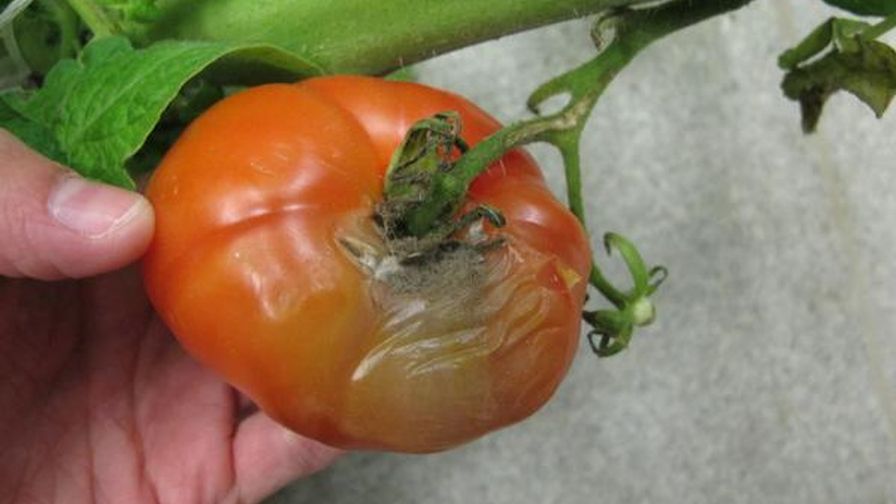Identifying and Controlling Botrytis in Controlled Environment Tomato Production

Botrytis infection on tomato fruit, showing rotted tissue and spores. Photo: Shawn Butler, NCSU
Rutgers University has released an advisory on identifying and controlling Botrytis on controlled environment tomato production. Here are some of the most important things growers need to know.
About Botrytis
Botrytis, also known as gray mold, is caused by a fungus known as Botrytis cinerea. This disease is known to be devastating to tomato crops grown in controlled environment agriculture (CEA). The fungus spreads rapidly when outdoor temperatures are cool and heating is used in the greenhouse.
Botrytis is found everywhere and prefers to attack injured plant tissue, meaning any dying or dead tissue on the tomato crop is at high risk for infection.
Infection Symptoms
The fungus is known to attack the flowers, fruit, stems, and leaves of the crop, especially after the crop has been pruned. Infections can also occur in cracks and leaf scars. The spores remain dormant until they sense stress from the plant.
Lesions on stems can turn into concentric rings that wrap the stem, causing the crop to wilt.
How to Prevent the Spread
The fungus spores can remain dormant for about 12 weeks. The spores prefer a temperature of 64°F to 75°F with high humidity. Leaves do not need to be wet for an infection to occur.
Using a horizontal fan to maintain airflow and keeping humidity levels low can help mitigate any infection risk. This is especially important on warm summer days that are followed by cooler nights.
Be sure to keep your facilities clean from any organic debris. All pruning material should be removed immediately.
To learn more, click here.








